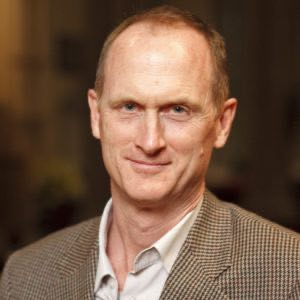Two laypeople who have served the Anglican Church with distinction are evaluating the diocese’s new governance pilot project.

Joy Packham, ODT, a member of the regional ministry of St. Margaret, Barrie, Trinity, Barrie and Good Shepherd, Stayner, and Robert Hart, ODT, a member of St. James Cathedral, are surveying groups and individuals and will report on their findings in September. They were appointed by Synod Council in June.
The governance pilot project was implemented in January 2022 with the first meeting of the newly constituted Synod Council, an amalgamation of the former Diocesan Council and the former Executive Board. The group provides strategic direction for the diocese between Synods.
Synod Council is chaired by the diocesan bishop and currently has 25 members, both clergy and lay, from across the diocese. It has five committees: the Audit Committee, the Finance Committee, the Property Committee, the Human Resources Committee and the Risk and Governance Committee. The committees are responsible for making decisions and recommendations within their remit.
The goal of the new governance structure is to facilitate and streamline decision-making, allowing more time for thorough discussions, says Canon Rob Saffrey, the diocese’s executive director. “The main question we get from parishes and others is: how do we move this forward? The governance pilot will make getting approval for a new building, for example, more streamlined, and it will make this question easier to answer.”
Ms. Packham and Mr. Hart have extensive volunteer experience in the diocese. Ms. Packham, a retired municipal IT manager with a professional designation in project management, has served the diocese in the areas of congregational development, finance and stewardship. Mr. Hart, a retired high school principal, has held a number of leadership positions at the cathedral and is a member of the diocese’s Volunteer Corps.
For the evaluation, Ms. Packham and Mr. Hart are interviewing a cross-section of people, from those who are involved in or affected by the diocese’s governance structure on a regular basis to those who may have only a passing experience of it.
“For us, we see the evaluation process as having two groups – what we’re calling the inside group and the outside group,” explains Mr. Hart. “In the inside group are Synod members, Synod Council or committee members or anybody who works at the Synod Office whose life is being impacted by the new model. The outside group is made up of people who are coming to Synod Council for business, to see from them how they find the process. We’re especially interested in talking to people who previously had to work with the old model – if they see the new model as more efficient, easier to navigate, more user friendly and equitable.”
By early July, they had surveyed Synod Council members and committee chairs, and planned to send a slightly different version of the survey to people who have represented groups that have made presentations to the committees or Synod Council itself.
They are both keen to make the evaluation process as transparent as possible and have an email address where they can be reached: [email protected]. “If anybody has a question or comment or concern about the new governance structure, they can communicate that to us,” says Mr. Hart.
The pair will report their findings to the Risk and Governance Committee and Synod Council in September. The findings will help those groups assess if the governance changes have been successful and if follow-up action is required.
“We’re basically trying to find out if the new structure is efficient – is it working,” says Ms. Packham.

They emphasize that their job is not to pass judgement on the changes or make recommendations; rather, it is to collect feedback and data.
Synod Council has been meeting monthly since January. At its February meeting, it approved a policy that defines the decision-making authority of Synod Council and the authority that it delegates to its committees. The policy gives a committee the ability to approve certain items, recommend them for approval or report up to council.
“All of the committees are up and running and have held several meetings,” says Canon Saffrey. “They have reviewed their terms of reference documents and developed annual work plans. Committee chairs are reporting regularly to Synod Council.”
The constitutional and canonical changes required to carry out the pilot project were first considered at Synod in 2019; following that, some amendments were made, discussed at diocesan “town hall” meetings and then approved at Synod in 2021. The constitutional and canonical changes included an amendment stipulating that elections to Synod Council take place at Synod, rather than at area Pre-Synod meetings, to ensure a robust voting process. Another amendment stipulated that the nominating committee for Synod elections consider the geographical, gender, age, theological, racial and ethnic diversity of the diocese to ensure a diverse slate of candidates and that Synod Council is representative of the diocese.
The pilot project will last until late 2023, when Synod will vote on whether the changes should be made permanent or the diocese should revert to the old structure. An update on the project will be sent to the next regular session of Synod, which will be held online Nov. 17-19, 2022.



Paul preaches in Corinth